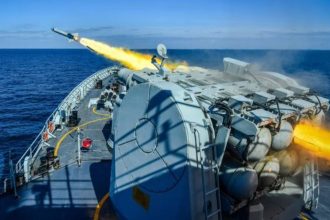The International Monetary Fund’s (IMF) trade projections for the first quarter went off by $1.2 billion, as both exports and imports plunged by 14%, increasing the government’s reliance on foreign borrowing in a bid to shore up foreign currency reserves.
Massive contraction in exports and imports in the July-September period of fiscal year 2015-16 narrowed down the trade deficit by 14.8%, reported the Pakistan Bureau of Statistics on Tuesday.
The receipts from exports stood at only $5.2 billion in July-September – almost 14% or $836 million less than the receipts in the comparative period of last year, said the national data-collection agency. The exports were also $516 million less than what the IMF projected in its recent report on Pakistan’s economy.
Imports contracted 14.4%, dropping to $10.7 billion, which were $1.8 billion lower than the import bill in the comparative period of previous fiscal year. The imports were $675 million higher than the projections made by the IMF.
Resultantly, the trade deficit in first three months of the new fiscal year shrank 14.8% and stood at $5.5 billion. It was $959 million less than the previous fiscal year.
The gap between exports and imports was $1.2 billion more than the IMF’s estimates.
Due to dismal performance of exports and low level of foreign direct investment, the government is building foreign currency reserves through expensive foreign borrowings. It has been facing criticism for its policy of increasing reserves through borrowings.
“The foreign direct investment cannot improve until the security situation is improved and energy crisis is fully addressed,” said Finance Minister Ishaq Dar on Tuesday while speaking at a seminar on National Cohesion and Economic Development.
The IMF has projected a nominal growth of 0.7% in exports in the current fiscal year, unlike the government’s estimates of 6.6% growth.
The government has so far been blaming external factors, particularly the fall in commodity prices, for low volume of exports. However, experts like Dr Ashfaque Hasan Khan link it with a slowdown of economic activity.
Instead of borrowing, the private sector is retiring debt, which is an indication that industrial activity is not picking up. The data compiled by State Bank of Pakistan shows that from July through September 25, the private sector retired Rs55 billion worth of credit.
Pakistan is highly dependent on import of goods and a slowdown is one of a few indicators suggesting trends in national output. On a month-on-month (MoM) basis, Large Scale Manufacturing contracted 3.7% in July over June, according to the PBS.
Exporters have been complaining about an increase in the cost of doing business due to the government’s decision to enhance the rate of electricity, gas tariffs and increasing burden of indirect taxes. The industry’s cost is also growing by almost 3% annually due to the Federal Board of Revenue’s reluctance to clear pending refunds.
The trade deficit narrowed down to $1.8 billion in September, which is one-fourth or $614 million less than the one posted in September last year, according to the PBS. The major reason behind the massive reduction in trade deficit was over 23% fall in imports that stood at $3.5 billion, $1.1 billion less than the comparative period.
Exports last month stood at $1.7 billion, which were $433 million or 20.4% less than the exports of September 2014.
The trade deficit in September over August also narrowed down by 11.8% due to reduction in both imports and exports. The exports contracted 5.6% in September over August while imports decreased 8.8%, data from PBS showed.






